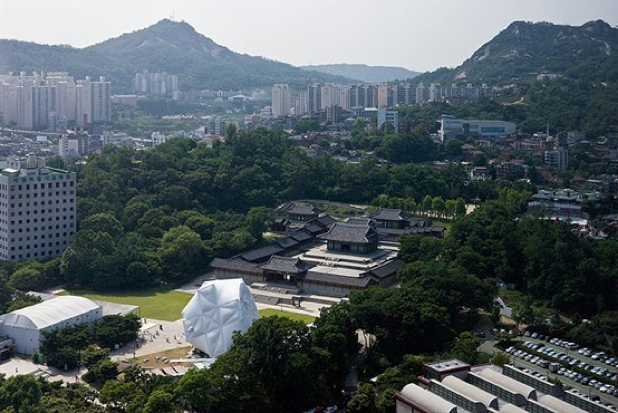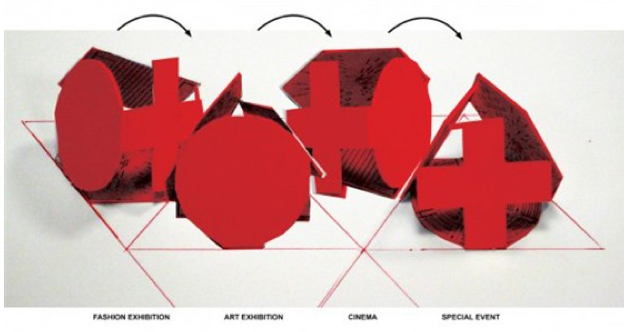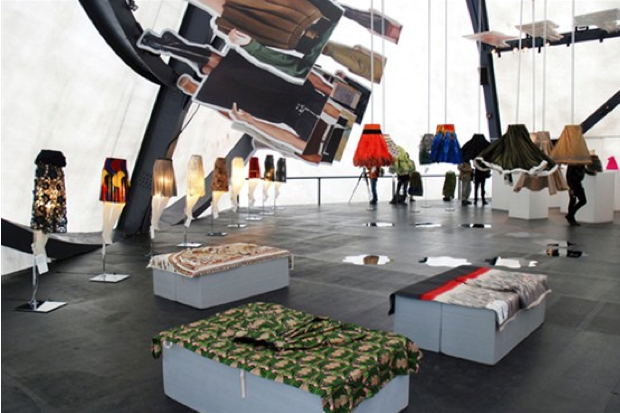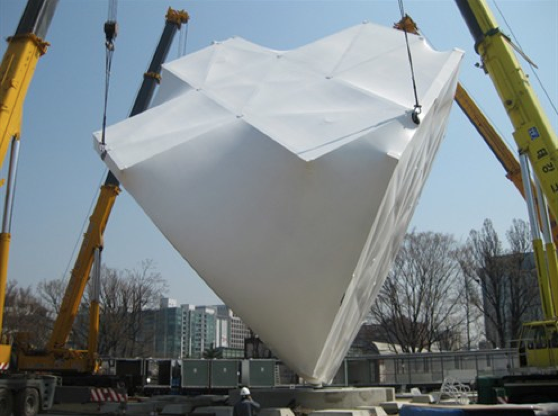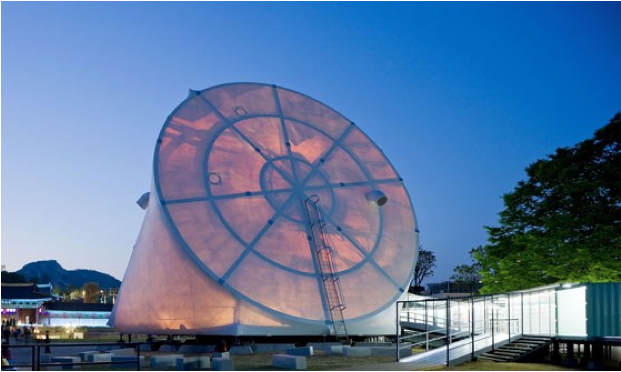FASHION’S LOVE AFFAIR WITH architecture is, at least at face value, an aspirational one, the academic tendencies of architectural discourse lend authenticity to fashion, which is traditionally perceived as trivial, and changeable in contrast to the sheer solidity of an architectural structure. At first sight the collaboration between Miuccia Prada and Rem Koolhaas reflects a similar dynamic. The partnership between the two, both highly influential figures in their respective fields has been a highly successful one. Rem Koolhaas is perhaps best known as the director of OMA (The Office for Metropolitan Architecture) which he co-founded in London in 1975. Rising to prominence in 1980 with his presentation ‘Presence of the Past’ for the first Venice Architecture Biennale, he has remained a name affiliated with design innovation and dynamism. No stranger to collaboration, the success of the Prada brand must be credited to Miuccia’s ability to brand-associate. The ongoing partnership between designer and architect spans over a decade since they began working together in 2000, including various projects from catwalk presentations, campaign graphics to more commercial retail projects.
The 20m high Prada Transformer was commissioned by Prada for the city of Seoul in South Korea as a dynamic space for exhibitions and cultural programming in 2009. The temporary structure, located adjacent to the city’s Gyeonghui Palace, was formed with each of the four walls as a geometric shape: a circle, a cross, a hexagon, a rectangle, held together with a translucent membrane. It could therefore be physically repositioned or rolled onto a new side to change the dynamic of the interior space and suit the planned use. For instance, in one event on the program, Prada presented an exhibition in the space, ‘Waist Down’, of Prada skirts displayed as gallery objects.
The structure was the outcome of a dynamic rethinking of architectural form and use, a highly valuable affiliation for the Prada brand in that it broadens the otherwise narrow concerns of high fashion. In presenting her garments in the space we are encouraged not only to look at Prada clothing as a work of art, affording uniqueness in status, but also as a socially and culturally flexible brand, and one that can be engaged with in a variety of ways. For Koolhaas the value is perhaps less straightforward or aesthetic, in that working with Prada instead offers his studio, OMA, an opportunity to design a solution, or outcome that challenges and furthers their architectural practice.
On the one hand the work between Koolhaas and Prada is innovative and forward-thinking, exploring new ways for the public, or moreover, consumers to engage with fashion and architecture on a cultural level, however it is important not to forget that the project has a commercial underpinning. What large-scale projects such as this ultimately succeed in, is selling more products through a dynamic and captivating spectacle.
